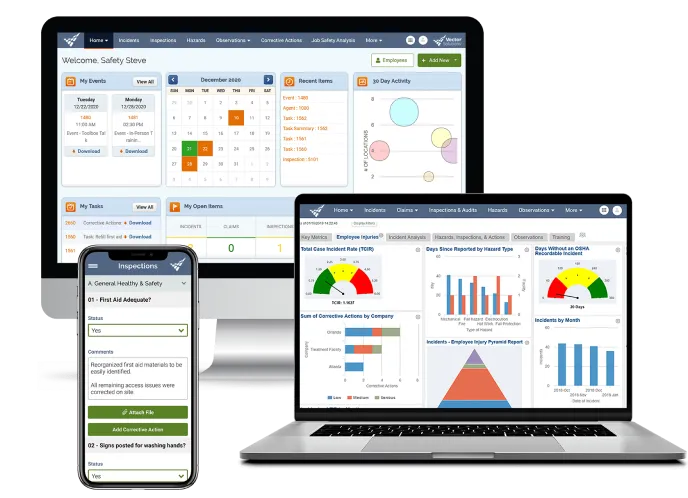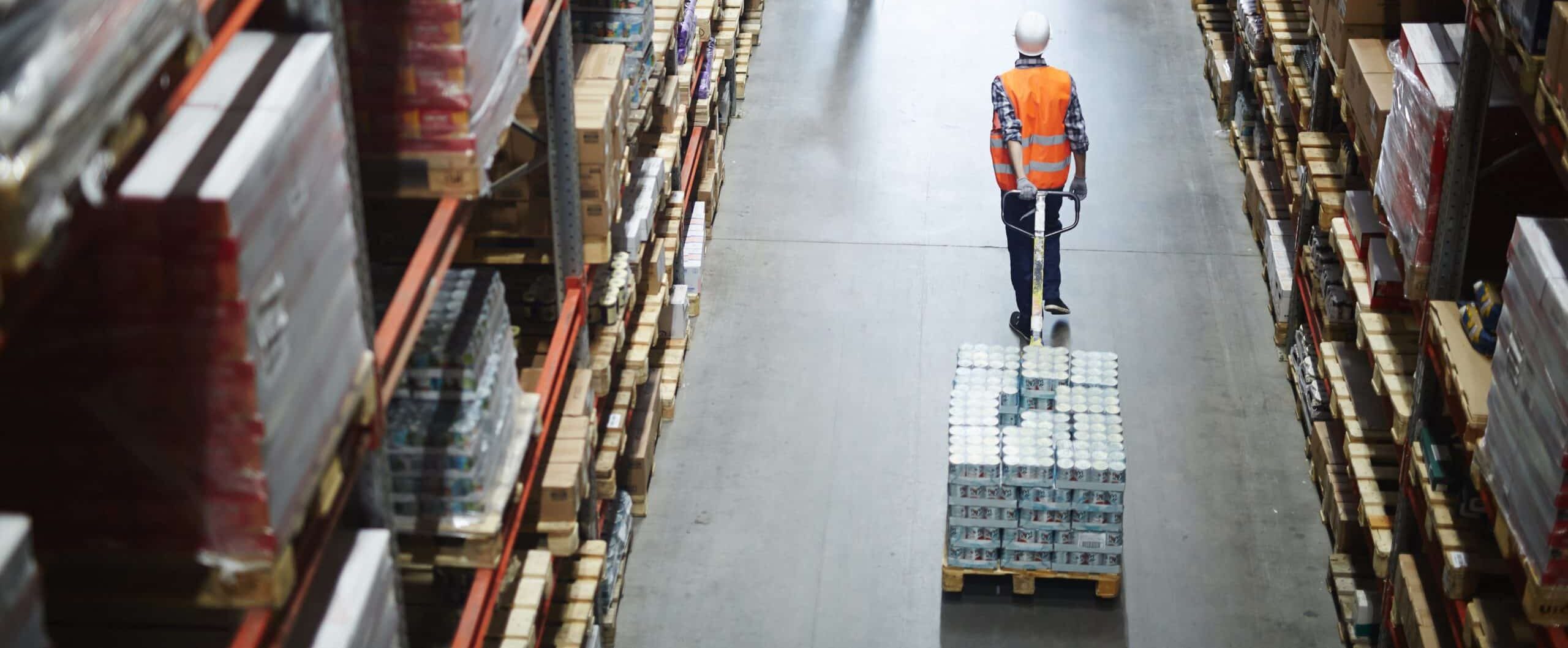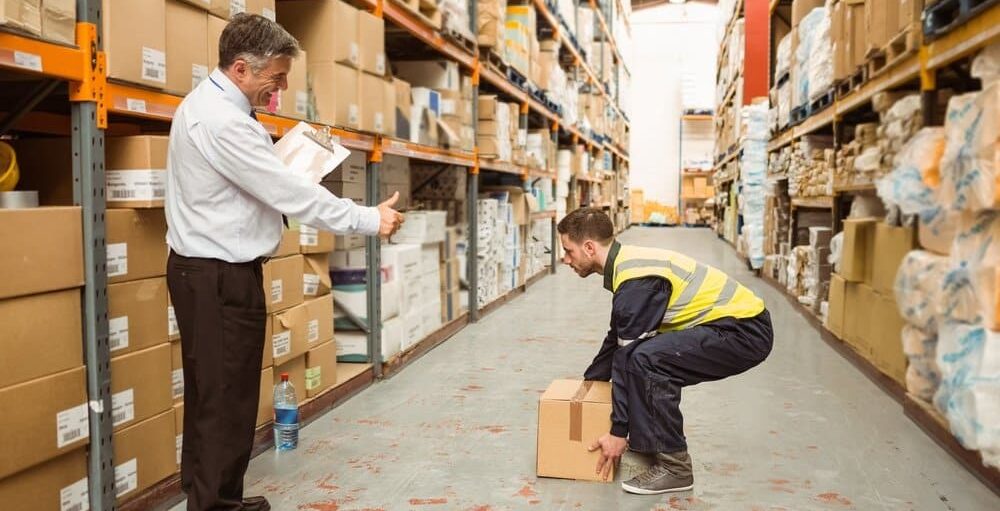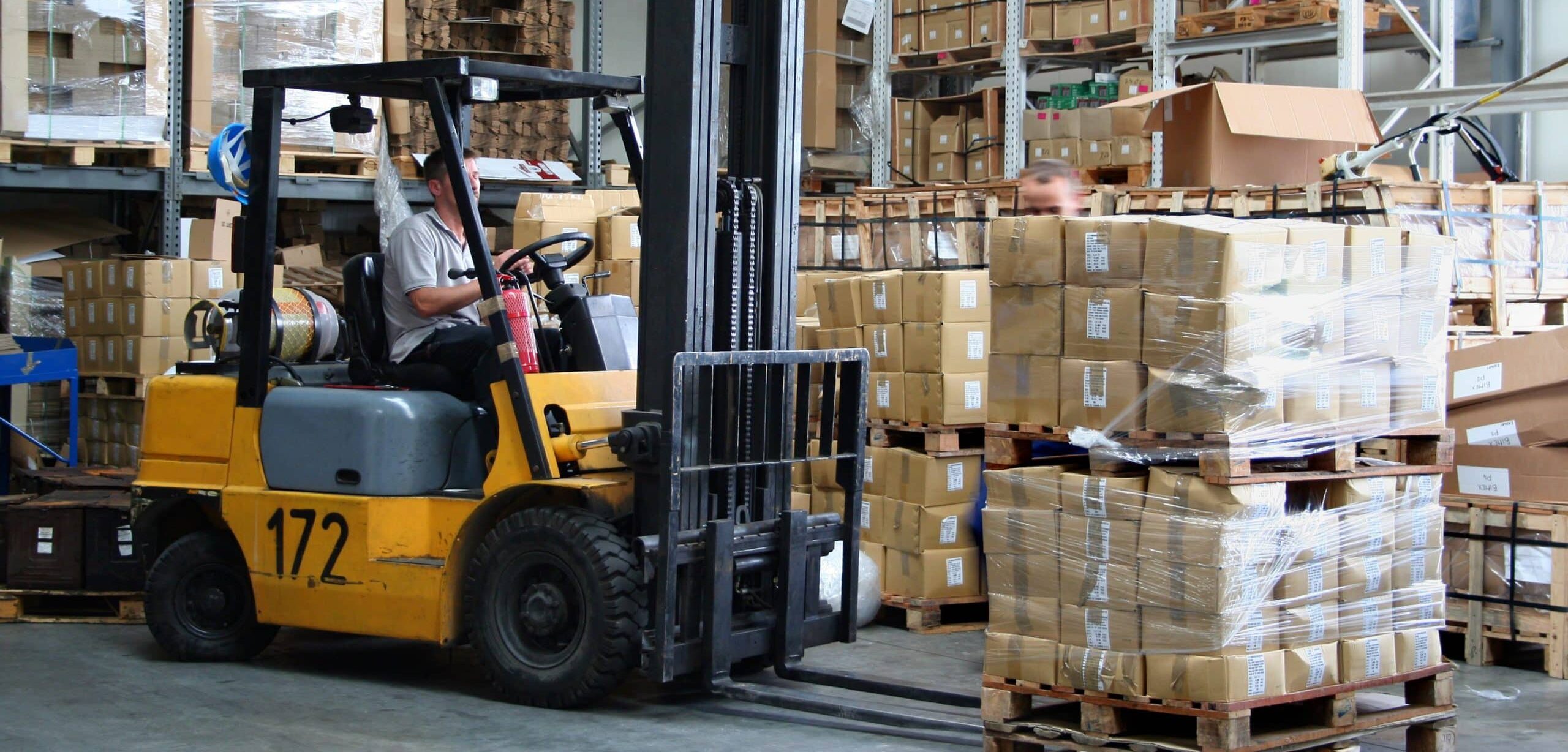March 12, 2024 9 min read

5 Essential Warehouse Safety Tips
Industry:
Solution:

Warehouses can be dangerous places to work. If warehouse safety isn’t made a priority, it has very serious consequences. Unfortunately, fatalities in the warehouse industry have gone up more than 100 percent since 2019. But with the right tools and preparation, companies can help workers avoid injuries and protect their bottom line. Use these five warehouse safety tips to improve your safety culture.
What Are the Safety Risks of a Warehouse?
There are numerous hazards in warehouses. Many of those hazards are related to equipment. Here are the top warehouse safety risks to look for:
Forklifts and Powered Industrial Trucks (PITs)
This is one of the biggest safety issues in warehouses. 87 people die every year due to forklift accidents and many more are injured. Training your workforce on safe forklift operation should be an essential part of your training program.
Carbon Monoxide Exhaust Build-Up
Mobile equipment such as forklifts and trucks run on gasoline or diesel and, therefore, expel carbon monoxide as exhaust. This can build up to dangerous, even fatal, levels without proper warehouse ventilation. To keep employees safe, teach them how to properly use this equipment and spot the sights of early carbon monoxide poisoning:
- Impaired vision
- Impaired muscular coordination
- Headaches, dizziness, and nausea
- Flu-like symptoms
Loading Dock Safety Issues
There are various warehouse safety hazards in and around loading docks. Common issues include forklifts running off the decks, products/equipment falling on or striking employees. Our newly updated course on Warehouse and Loading Dock Safety is just one example of how teams can be empowered to identify hazard-causing behaviors while working with and around warehouse equipment and loading docks.
Pedestrians and Mobile Equipment
Many injuries in warehouses are due to pedestrian and mobile equipment incidents. It’s critical to train your employees on safe forklift operation around pedestrians. This includes:
- Making eye contact
- Yielding the right of way
- Slowing down when vision is obscured
- Maintaining a safe distance from pedestrians
Pedestrians in a warehouse also should be trained in how to keep themselves safe, including:
- Understanding how forklifts move
- Never riding or passing underneath forklifts
- Walking in well-marked walkways whenever possible
Conveyor Safety Hazards
According to OSHA, workers can be injured by conveyors when “they’re caught in pinch points or in the in-going nip points, when they’re hit by falling products, or when they develop musculoskeletal problems associated with working postures or repetitive motions.”
To avoid unnecessary injuries:
- Inspect conveyors regularly
- Make sure pinch points and in-going nips are properly guarded
- Develop ways to lockout conveyors, especially for maintenance, and train workers on the process
- Ensure the conveyor area and walking surfaces are properly lit
Hazardous Materials
Another warehouse safety concern is the proper storage of hazardous materials. Hazardous materials must be stored properly to avoid risk. Train your employees to:
- Stack loads evenly and in straight columns
- Place heavier loads on the lowest and middle shelves
- Remove one object at a time from shelves
- Keep aisles and passageways around shelves clear, clean, and in good repair
Ergonomic Safety
Many warehouse activities may lead to ergonomic stresses, which can lead to serious or long-term incidents over time. To protect your workforce from ergonomic injuries:
- Use safe lifting techniques (including using lifting aids, when possible)
- Reduce lifting and carrying strains by improving workplace design
- Use machines to ease strains while shrink-wrapping
- Wear proper footwear that is slip-resistant and impact-resistant
Fire Hazards in Warehouses
Fires are another major hazard in a warehouse environment. To prevent fires, it’s vital to buy fire extinguishers (and teach employees how to use them) as well as sprinkler systems.
Why Warehouse Safety Matters
There are nearly one million Americans working in the warehousing and storage industry. And these workers are the backbone of the U.S. economy and supply chain.
With the fatal injury rate being over two times higher in this industry than others, and the work being done so vital to our economy, there are so many reasons to invest in better workplace safety practices.
5 Warehouse Safety Tips
So, how can you start to improve warehouse safety for your organization? These five tips are actionable and can make a big difference right away.
1. Be aware of your surroundings.
Safety beings with awareness. Being alert and aware of potential hazards and safety issues is the first way to avoid workplace injuries.
This is especially true in high traffic areas such as the loading docks. Safety signs offer warnings to employees to keep them alert. These signs should be visible and free of obstruction.
Keep in mind though that being alert extends beyond reading safety signs. Being aware of potential hazards is the best way to turn an incident into a near miss.
2. Ensure all workers are properly trained.
Training isn’t just about teaching employees how to follow safety procedures. It should remind employees that they face safety hazards every day, and they remain safe because they know how to avoid these hazards. Understanding the value training provides ensures workers take workplace safety more seriously.
Training is also important to ensure you are compliant with OSHA training regulations to avoid costly fines and penalties.
3. Maintain proper ergonomics and lifting techniques.
Ergonomics and lifting safety are too often ignored. But this is a critical part of warehouse and employee safety that should be taken seriously.
A single action such as lifting a box once may not cause any damage on its own. But warehouse employees are subject to repetitive motions that strain the body enough to cause damage over long periods of time.
Be proactive in preventing the injury that 10% of the US population suffers from. Follow OSHA’s heavy lifting techniques and guidelines to avoid injury and provide opportunities for employee training that aligns with OSHA ergonomic and lifting guidelines.
4. Keep aisles and pathways clear of materials and debris.
Good housekeeping helps to prevent several types of hazards in the warehousing industry.
Clear pathways are an excellent way to avoid slip and trip hazards. Trips and falls are common injuries in most industries, and warehouses are no exception.
Most importantly, keeping aisles and pathways clear is a critical part of fire safety. The nature of warehouses makes them particularly susceptible to fires spreading rapidly.
As such, all emergency exits need to be clearly marked and free of debris. This will ensure everyone can leave in an emergency.
5. Reinforce forklift safety rules
The most violated OSHA standard by warehouses is the forklift safety standard. This leads to roughly 95,000 employees being injured every year while operating forklifts. So, double down on your forklift training and make sure you connect training to why it’s so important.
Also, make sure employees are conducting regular forklift inspections to meet OSHA requirements. Doing so will not only improve safety, but prevent any fees associated with OSHA standard violations.
Online Safety Training Courses
Explore 400+ courses based on industry best practices and national standards established by OSHA, EPA, DOT, and other leading safety organizations.
View Courses
Emergency Preparedness and Response Plans for Warehouses
Effective emergency response plans are critical for minimizing the overall impact of safety incidents when they do occur. Developing clear procedures for common safety scenarios, like fires and chemical spills, and conducting regular safety drills to familiarize employees with these procedures, can significantly reduce the impact of warehouse safety incidents.
It is also important to emphasize communication in emergencies, with well-established protocols and tools to ensure quick and efficient responses during a crisis. Regularly reviewing and updating these plans helps keep workers up-to-date and effective in dealing with safety incidents.
Regular Safety Audits and Inspections in Warehouses
Regular safety audits and inspections help in maintaining a safe warehouse. These audits help assess safety practices and compliance, while inspections focus on identifying and addressing potential hazards like faulty equipment and unsafe storage. Regular audits and inspections promote continuous improvement and reinforce the commitment to a safe working environment.
Many companies choose to use Safety Inspection Software to conduct and record their safety audits and inspections. These platforms give safety directors critical insights so teams can implement corrective actions to resolve inspection findings before they result in an incident.
EHS Software for Compliance and Safety Management
Simplify safety reporting and gain critical insights to improve workplace safety, boost productivity, and improve efficiency.
Learn More
Using Training Technology for Enhanced Warehouse Safety
Integrating training technology into your safety programs can significantly boost warehouse safety. 3D animated content and online eLearning platforms allow employees to experience and learn about hazardous situations in a risk-free environment. By leveraging these technologies, you enhance employee preparedness and improve overall safety.
Why Choose Vector Solutions for Warehouse Safety Training
To improve warehouse safety, you must invest in better employee training. Safety training is critical in ensuring new employees know the proper techniques, and experienced employees don’t ignore them!
But we understand that some of the biggest barriers to administering employee training are:
- Knowing what training you need
- Assigning training to the right people at the right time
- Monitoring who has completed training and when it’s due
Don’t keep relying on manual processes. They take up too much of your valuable time and are more prone to errors.
With Vector Solutions, we can truly become your all-in-one training and safety partner. We offer:
- Robust and award-winning safety and industry eLearning courses
- An employee health and safety platform to automate and improve EHS management
- A learning management system (LMS) to help you track, assign, and manage training
- Learning Paths that outline training curriculums for industrial roles
- Competency assessments to find skills gaps and streamline the process of assigning training
Ready to learn more? Request a demo today to learn how you can improve warehouse safety with our suite of tools.











